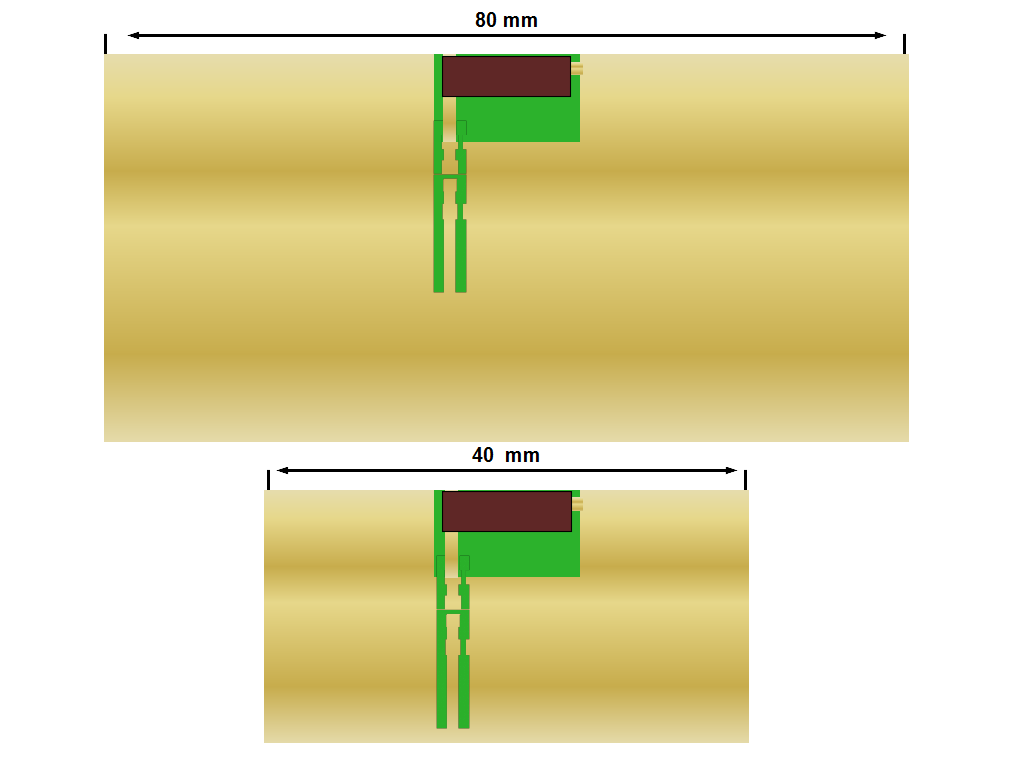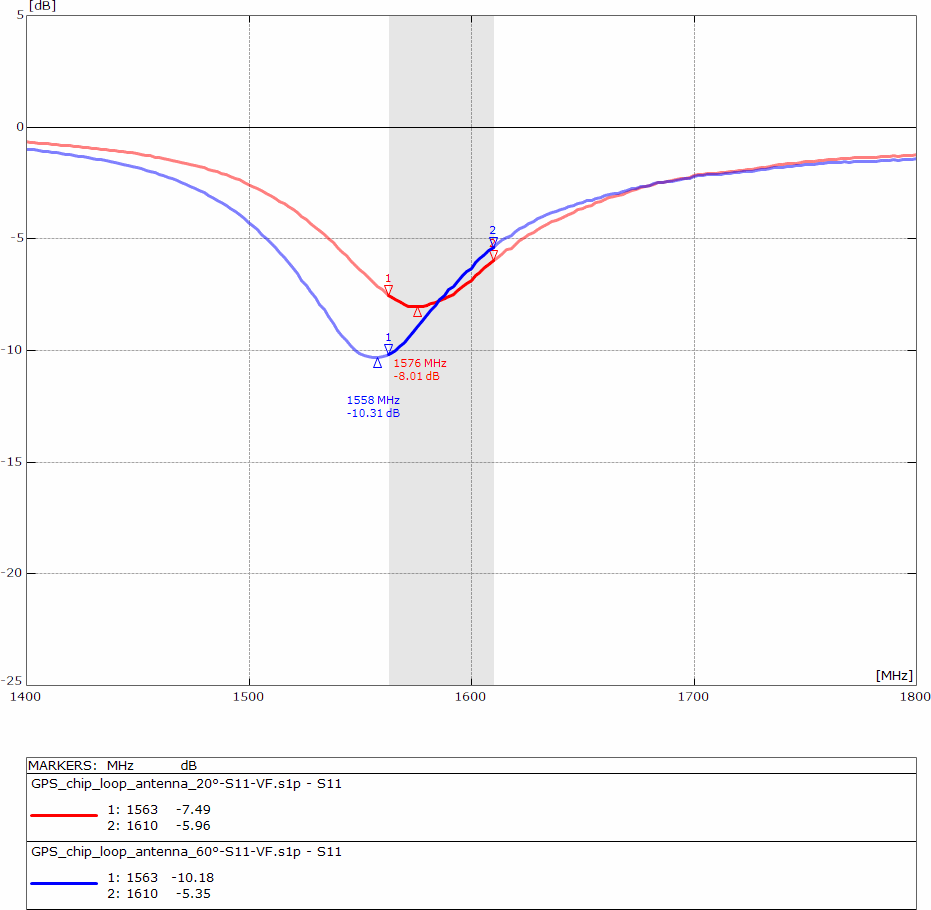Interference of temperature on GPS antenna resonant frequency
The device under test is a PCB of size of 40 mm x 20 mm, again with a GNSS antenna for a small tracking device. Small mobile GSM / GPS trackers are common for pets, humans or assets. Chip antennas operate as loop antennas which are magnetic antennas and are usually unaffected by being near to the body. If the device is touched or some objects come close to the antenna, the centre frequency of the antenna will not be de-tuned. In this test, we have a closer look at the effect of temperature on the resonant frequency of the antenna.
Operation of GPS chip loop antennas
You can identify loop antennas by its two connection pins. One pin will be connected the GPS module and the other will be connected to ground plane. They always have a cut-out zone without copper on all layers under the antenna. The pin to connect to the GPS module under the antenna will be like the pin in the picture or it will be turned 90 degrees to the other pin connected to ground. Such GPS antennas with their small bandwidth always need tuning. With passive components between the GPS module and the antenna, you can shift the center frequency.
The upper graphic shows a GPS chip loop antenna on a 80 mm and 40 mm long ground plane. Please note that the size of the GPS chip antenna is not to scale. The data sheets often specify the gain and Return Loss for the 80 mm length only. If you use a 40 mm long PCB instead of an 80 mm long PCB you will lose gain and bandwidth. If the bandwidth at 80 mm size is already marginal then at 40 mm size it will be too small. If you move the antenna away from the center of the 80 mm or 40 mm PCB to the left or right side you will decrease gain as well.
GPS chip antenna bandwidth
In this test we will not look at the bandwidth and focus on the effect of the temperature only. We will measure the Return Loss at ambient temperature 20 degree Celsius and at 60 degree Celsius as well. You can achieve 60 degrees easily by charging the LiPo battery inside the small GPS tracking device.
GPS chip antenna frequency drift
The red curve shows the GPS chip antenna unmatched on the PCB in free space at 20 degree Celsius. The blue Return Loss curve shows the chip antenna unmatched at 60 degree Celsius. The delta between 1576 MHz minus 1558 MHz is already 18 MHz. This frequency drift is related to the chip antenna itself or the FR4 or a combination of both. Because there were no matching components on the PCB we can exclude an effect of the matching circuit on the drift.
GPS chip antenna conclusion
The DUT shows a critical frequency drift at 60 degrees Celcius. A matching circuit can change the drift backward because the value of two to three passive components in the matching circuit will have their own frequency drift as well. In the worst case the passive components will cause a drift in the same direction and increase the measured 18 MHz drift to 20 MHz or higher.
GPS chip antenna consulting
The DUT under test has shown that there is a desperate need for antenna pre-testing. To avoid problems and faults there is a much better approach. The solution is an antenna pre-tested by third party for just Euro 240 including documentation on Return Loss for a non-matched antenna, simulation of the matching circuit plus matching achieved using passive components and checked again by measurement by Vector network analyzer.
- Test by VNA of the original non-matched antenna on PCB
- Export to S1P files and export to PNG files
- Simulation of the matching circuit
- Export to S1P files and export to PNG files again
- Test report in PDF format
The pre-test will always contain the test report and the S1P file of the origin PCB without a matching circuit. With the S1P file, the customer thecan simulate matching circuits on their own again.
If you are interested in an antenna pre-testing or antenna consulting for selection then do not hesitate to drop an email to harald.naumann (at) gsm – modem .de
Further GPS chip loop antennas under test
GPS antenna selection for a GSM / GPS tracker – DUT 1
GPS antenna selection for a GSM / GPS tracker – DUT 2
GPS antenna selection for a GSM / GPS tracker – DUT 3
GPS antenna selection for a GSM / GPS tracker – DUT 4

